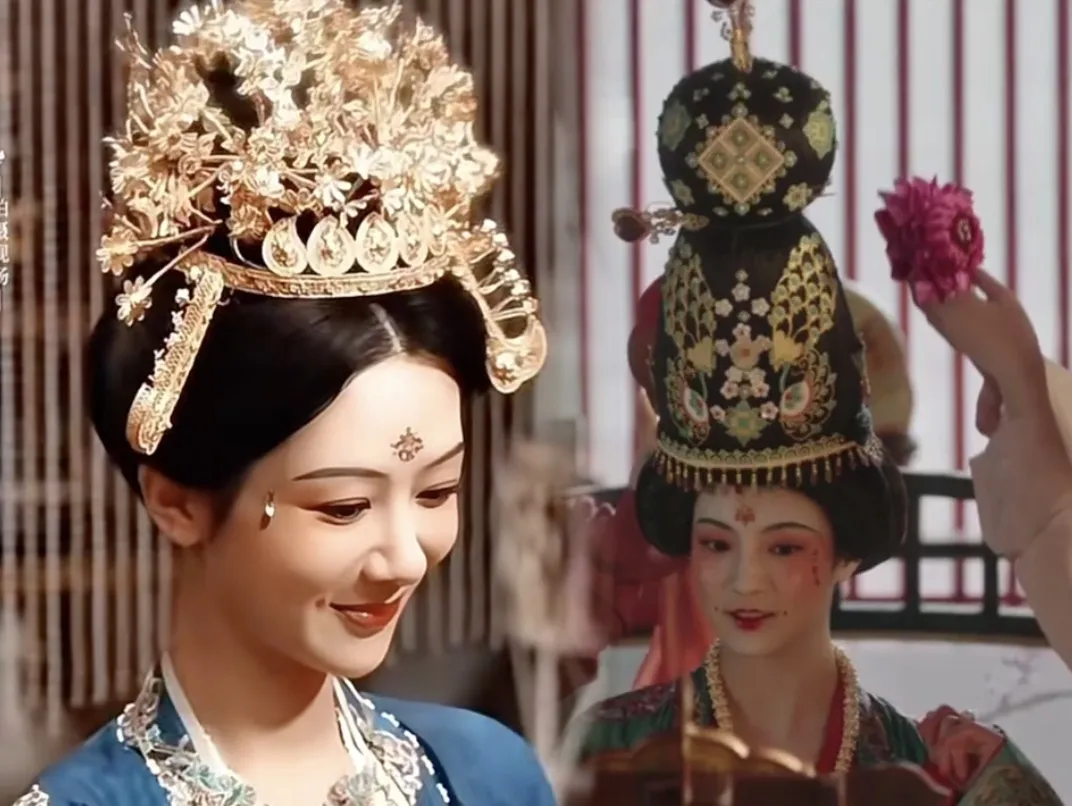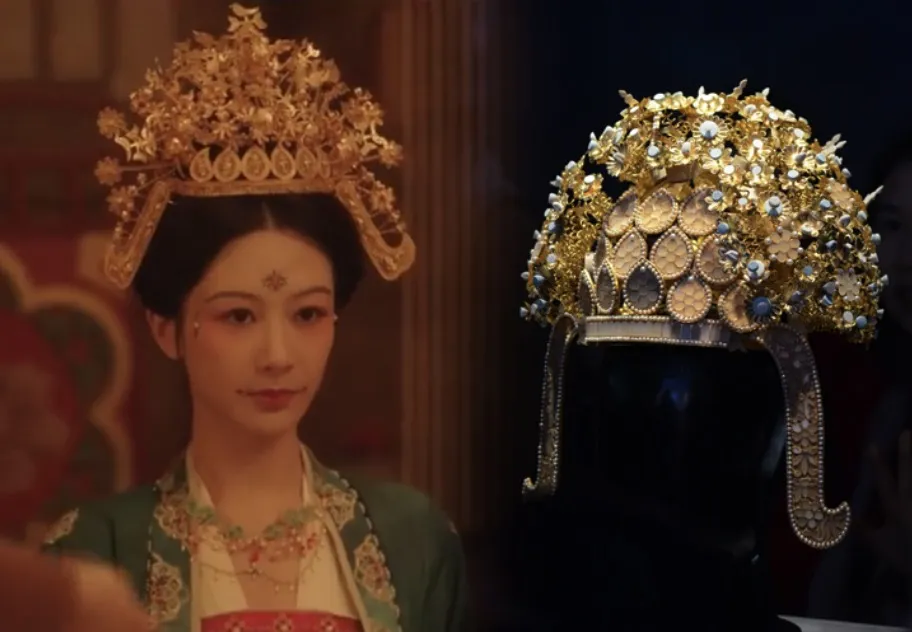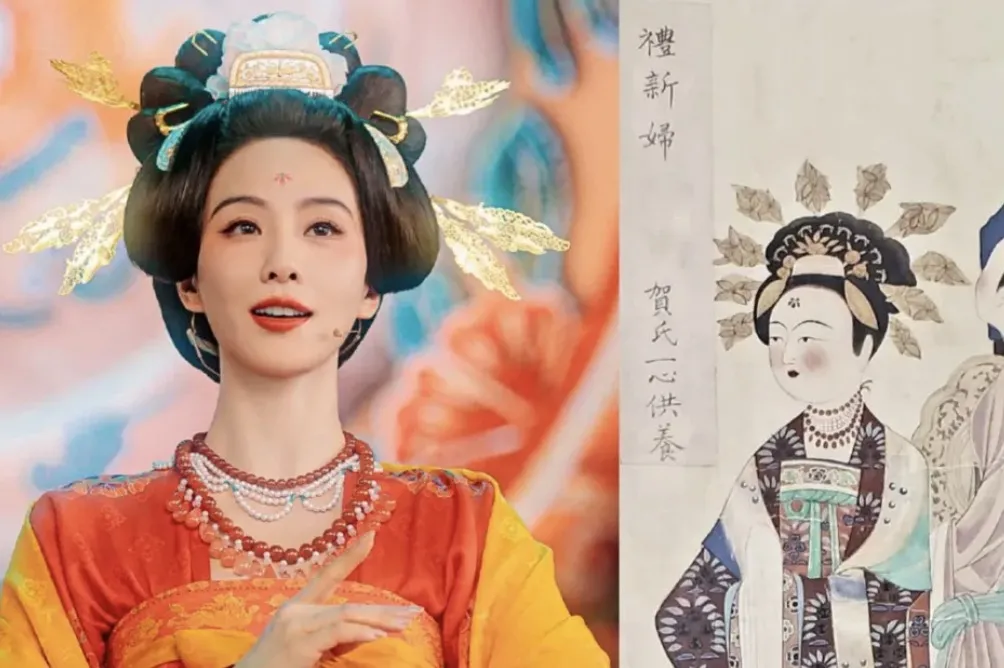In the historical drama Guose Fanghua, the wedding crowns have sparked much discussion due to their opulence and intricate details. While they appear to be modeled after historical artifacts, a closer examination reveals some discrepancies. This article delves into the fascinating world of these crowns, exploring their origins, design, and the historical accuracy behind them.

The Prototype: Empress Xiao's Crown
The crown worn by the character He Weifang, played by Yang Zi, seems to be inspired by the crown of Empress Xiao from the Sui Dynasty. Over time, the design evolved through the Tang Dynasty, retaining elements like the Chaidian (hairpins) and Bobin (side ornaments) as markers of status. However, the crown's design in the drama doesn't perfectly align with the character's social standing, as historical records indicate that such crowns were reserved for high-ranking noblewomen.
During the Tang Dynasty, women favored high buns, with the height and complexity of the hairstyle reflecting their social status. Noblewomen wore elaborate hair ornaments, including gold hairpins, in symmetrical pairs for formal occasions. The number of Huashu (floral ornaments) and Huadian (floral hairpins) varied by rank, with empresses wearing twelve and first-rank noblewomen wearing nine, decreasing by rank.
The Components of the Crown
The crown typically consists of several parts: the Bijiu (base), Bobin (side ornaments), Jindian (golden hairpins), and hairpins. The Bijiu served as a pre-assembled base to simplify the wearing process, while the Bobin balanced the crown and denoted the wearer's status. The Jindian, shaped like petals, resembled a blooming lotus and varied in number based on rank. Hairpins were used to secure the entire ensemble.
While the crowns in the drama are visually stunning, they incorporate creative interpretations. For instance, the crown of the county princess was reconstructed from fragmented artifacts, and He Weifang's crown is a Tang-style adaptation of Empress Xiao's Sui-era crown. These artistic liberties remind us that historical dramas are meant for entertainment, not strict historical education.
Despite the historical inaccuracies, the crowns showcase remarkable craftsmanship. Empress Xiao's crown, for example, featured two Bobin, cross-shaped beams, and three hoops, adorned with 12 teardrop ornaments and 13 Huashu, made from materials like copper, gold, glass, and pearls. Such details highlight the artistry of ancient Chinese accessories.
While the crowns in Guose Fanghua may not be entirely historically accurate, they offer a glimpse into the opulence of ancient Chinese nobility. Viewers can enjoy the drama's aesthetic while appreciating the rich cultural heritage behind these intricate designs.


